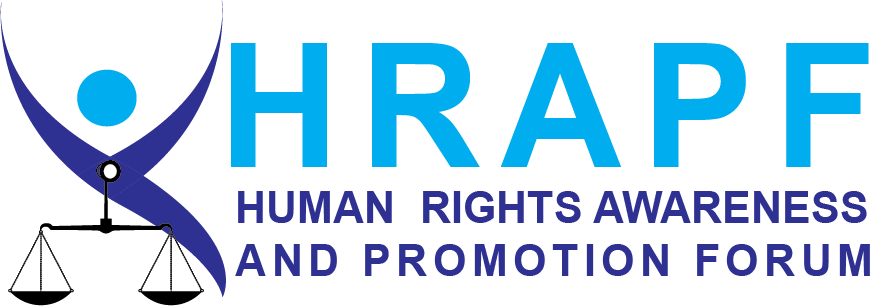Harnessing Nature’s Power: Lessons from Wind to Boost Growth
Natural forces have long served as catalysts for human progress, inspiring innovations and shaping cultures. Recognizing and harnessing these forces can lead to sustainable growth both personally and organizationally. Among these forces, wind stands out as a powerful metaphor and practical resource, illustrating how unseen energies can be channeled effectively for advancement.
Understanding wind’s dynamics offers valuable lessons on strategy, adaptation, and resilience. This article explores the science behind wind, historical and modern harnessing methods, cultural symbolism, and how modern stories like Aiko and the Wind Spirit exemplify these principles. By connecting abstract concepts with real-world applications, we aim to provide actionable insights into leveraging natural forces for growth.
- The Science of Wind: Understanding the Force of Nature
- Traditional and Modern Methods of Harnessing Wind Power
- Symbolism of Wind in Cultural and Educational Contexts
- «Aiko and the Wind Spirit»: A Modern Illustration of Harnessing Natural Forces
- Extracting Lessons for Personal and Organizational Development
- The Role of Chance and Strategy: Learning from Game Mechanics
- Deepening Understanding of Natural Power
- Practical Steps to Harness Wind-Like Forces
- Conclusion: Integrating Nature’s Lessons
The Science of Wind: Understanding the Force of Nature
Wind is generated by the movement of air molecules driven primarily by uneven heating of the Earth’s surface by the sun. Variations in temperature create differences in air pressure, causing air to move from high-pressure areas to low-pressure zones. The Coriolis effect, due to Earth’s rotation, influences wind patterns, resulting in complex global circulation systems.
Physically, wind exhibits properties such as velocity, direction, and kinetic energy, which can be harnessed for various purposes. For example, wind turbines convert kinetic energy into electrical power, contributing significantly to renewable energy portfolios worldwide. According to the Global Wind Energy Council, wind power capacity has increased exponentially over the past two decades, reaching over 837 GW globally by 2021, underscoring wind’s vital role in sustainable development.
| Property | Description |
|---|---|
| Velocity | Speed of wind, measured in km/h or m/s |
| Direction | The compass point from which the wind originates |
| Kinetic Energy | Energy possessed by moving air, convertible to electricity |
Understanding wind’s physical properties aids in strategic planning for harnessing its energy. Just as wind’s invisible force influences weather and ecosystems, recognizing subtle patterns can inform growth strategies in organizations, emphasizing the importance of perception and timing.
Traditional and Modern Methods of Harnessing Wind Power
Historically, humans utilized wind through sailing ships, windmills, and early energy applications. Wind-powered sailing revolutionized trade and exploration, enabling long-distance travel without fuel. Windmills, dating back to ancient Persia and Europe, were employed for milling grain and pumping water, showcasing early harnessing techniques.
In contemporary times, technological innovations have refined wind harnessing. Modern wind turbines, equipped with aerodynamic blades and sophisticated control systems, convert kinetic energy into electricity efficiently. Offshore wind farms exemplify large-scale deployment, capable of powering entire cities. Comparing natural wind patterns with engineered solutions reveals how understanding environmental dynamics inspires innovation, leading to increased efficiency and sustainability.
- Historical use of wind for sailing, milling, and energy
- Development of modern wind turbines and offshore farms
- Lessons from natural wind patterns to optimize engineered solutions
Symbolism of Wind in Cultural and Educational Contexts
Across cultures, wind embodies change, inspiration, and unseen forces shaping human destiny. In mythology, gods like Aeolus in Greek myth or Fujin in Japanese tradition symbolize wind’s power to influence fate. Literature often depicts wind as a metaphor for transformation and new beginnings, such as in Shakespeare’s “The Tempest” or in Eastern poetic traditions.
Artistic representations, from ancient carvings to modern installations, emphasize wind’s intangible yet palpable influence. These cultural perceptions influence how societies approach growth and adaptation — viewing wind as a force to be respected and harnessed for progress.
“Wind reminds us that unseen forces can shape destiny just as much as visible actions.” — Traditional Proverb
«Aiko and the Wind Spirit»: A Modern Illustration of Harnessing Natural Forces
While not the central focus of this article, the story of Aiko and the Wind Spirit exemplifies timeless principles. It narrates how a young girl, Aiko, learns to recognize and cooperate with the Wind Spirit—a metaphor for natural energy—by understanding its subtle cues and respecting its power. The story highlights core lessons such as patience, timing, and strategic interaction with unseen forces, emphasizing that success often depends on harmony with natural rhythms.
Features like guarantee, Spirit symbols, and special triggers serve as allegories for strategic tools in growth—representing trust, recognition of vital signs, and timely action. This modern tale underscores that leveraging natural energy requires insight, respect, and adaptability, principles equally applicable in personal and organizational contexts.
Extracting Lessons from “Aiko and the Wind Spirit” for Personal and Organizational Development
The story’s core lessons are universally applicable:
- Recognize unseen forces—like wind—that influence progress; in organizations, these might be cultural shifts or emerging technologies.
- Leverage natural strengths and opportunities, such as identifying core competencies (Spirit symbols) or aligning initiatives with natural cycles (Wild Spirits).
- Practice patience and strategic timing, much like triggering features at optimal moments, to maximize growth potential.
The Role of Chance and Strategy: Learning from Game Mechanics as a Metaphor
Game mechanics such as scatter triggers and tiered rewards serve as compelling metaphors for managing opportunities in real life. Scatter triggers, which activate upon specific conditions, mirror the importance of recognizing natural cycles—like market trends or environmental changes—and acting at the right moment. Tiered rewards symbolize incremental progress, emphasizing that small wins build toward larger success.
Aligning risk-taking with the ebb and flow of natural cycles encourages a strategic mindset. For example, understanding when to invest resources or pivot strategies, much like triggering a special game feature, can significantly enhance growth outcomes.
Applying these game-inspired strategies involves identifying key opportunities, managing risks wisely, and maintaining flexibility—principles that are vital for navigating complex growth landscapes.
Deepening Understanding of Natural Power
Connecting with natural forces has a profound psychological impact, fostering a sense of harmony and respect for the environment. Scientific research indicates that engaging with nature reduces stress, enhances creativity, and promotes well-being. Ethically, harnessing natural energy demands a sustainable approach—balancing technological advancement with environmental stewardship.
Future innovations inspired by wind’s dynamics include bladeless turbines, artificial intelligence-driven optimization, and bio-inspired engineering. These advancements promise more efficient and ethical ways to tap into natural power, aligning technological progress with ecological responsibility.
Practical Steps to Harness Wind-Like Forces in Growth Strategies
Implementing wind-inspired strategies involves:
- Identifying natural opportunities and strengths within your organization or personal pursuits, akin to recognizing favorable wind conditions.
- Cultivating patience and timing, similar to triggering specific game features at the right moment to maximize rewards.
- Incorporating symbolic elements—such as the idea of wind spirits or natural rhythms—to inspire engagement and foster an innovative mindset. This can be achieved through storytelling, branding, or team-building activities that emphasize harmony with natural forces.
Conclusion: Integrating Nature’s Lessons for Sustainable and Resilient Growth
Harnessing the power of wind offers profound insights into growth strategies rooted in understanding, respect, and timing. The story of Aiko and the Wind Spirit serves as a modern illustration of these timeless principles, emphasizing that success depends on harmony with natural rhythms and unseen forces.
By cultivating a mindset that recognizes and leverages natural opportunities, individuals and organizations can foster sustainable resilience. Continual learning from nature, adapting strategies to changing circumstances, and respecting ecological limits are essential for long-term growth.
“The future belongs to those who understand and harness the invisible energies around them.” — Adapted from ecological principles
All Categories
Recent Posts
Maltcasino ve Geri Ödeme İşlemleri
editörbet para yatırma yöntemleri ve güvenlik önlemleri
Betmarino ve Geri Ödeme Süreçleri

